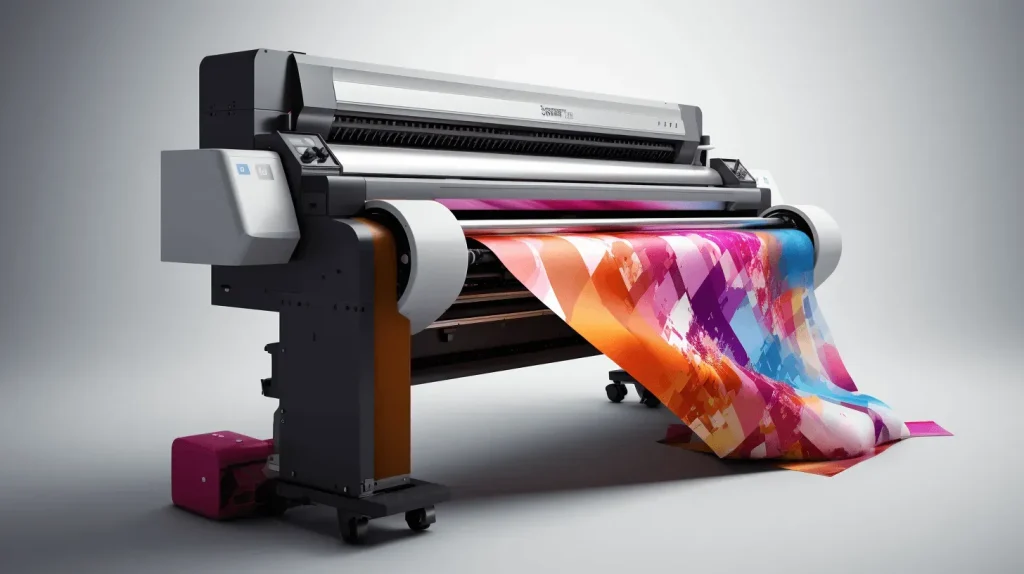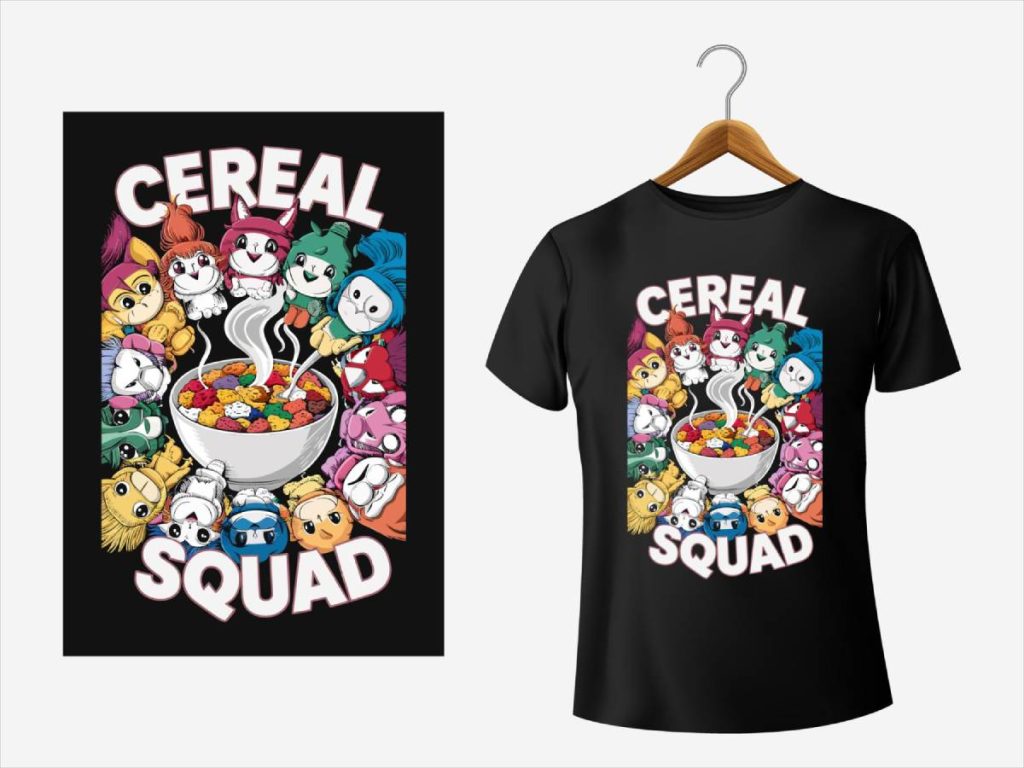In the realm of modern garment printing, DTF printing, or Direct-to-Film printing, has emerged as a game-changer, offering a suite of innovative features that set it apart from conventional methods. This cutting-edge garment printing technology excels in versatility, enabling applications on a wide range of fabrics and facilitating vibrant, intricate designs that cater to diverse customer preferences. As demand for custom apparel printing rises, DTF printing’s efficiency and cost-effectiveness make it an ideal choice for businesses looking to provide high-quality prints without substantial upfront investments. Furthermore, the durability of DTF prints ensures they withstand the test of time, remaining bold and vibrant even after multiple washes. With a growing emphasis on sustainable printing methods, DTF printing is not only revolutionizing the fabric printing industry but also aligning with consumer values toward environmentally friendly production practices.
Direct-to-Film printing, often referred to by its abbreviation DTF, is gaining traction as a preferred choice in the custom apparel industry. This innovative printing method allows for precise and detailed designs that can be applied across various fabric types, making it a favorite among creators of personalized clothing. By leveraging advanced printing technology, DTF offers extensive benefits including high print quality alongside significant cost savings for smaller production runs. As businesses embrace creative flexibility, the sustainability potential of DTF printing also positions it as a responsible alternative to traditional garment printing technologies. With an increasing focus on eco-conscious practices, DTF is set to redefine the future landscape of textile customization.
Understanding DTF Printing Technology
DTF printing, or Direct-to-Film printing, is revolutionizing the garment industry by allowing designs to be transferred to fabrics with unmatched precision and quality. This technology bypasses many limitations posed by traditional printing techniques, such as screen printing, making it an extraordinary option for custom apparel printing. With its ability to print on a wide range of materials, including cotton, polyester, and blends, DTF printing provides the flexibility that today’s consumers crave, especially in a market driven by fashion diversity.
Unlike traditional methods that often require intricate setups and extensive preparation, DTF simplifies the entire process by directly applying designs onto a special film. This film then undergoes a process of powder adhesive application and curing, which results in long-lasting and vibrant prints. For small businesses and individuals keen to explore garment printing technology, DTF is a gateway to creativity without the daunting barriers usually associated with screen printing or traditional heat transfers.
The Benefits of DTF Printing for Custom Apparel
One of the standout benefits of DTF printing is its ability to produce high-quality prints with vibrant colors and intricate details. This makes it exceptionally suited for custom apparel where unique designs and strong visual appeal are essential. Businesses can easily cater to demand for personalized items, from branded merchandise to limited-edition fashion pieces, ensuring they meet customer expectations for both quality and individuality. With the growing trend in personalized products, DTF stands at the forefront of fulfilling this market demand.
Additionally, DTF printing not only results in high satisfaction among customers but also optimizes production efficiency. As designs can be created quickly and the setup time is minimal, businesses are able to produce small batch orders economically without sacrificing quality. This capability aligns perfectly with the needs of custom apparel makers who often face the challenge of balancing quality with production cost, paving the way for a thriving business model in apparel customization.
Durability and Longevity of DTF Prints
Durability is a critical factor in garment printing, and DTF technology excels in this aspect. Garments printed using DTF techniques are known for their resistance to fading, cracking, and peeling—common issues faced with other printing methods. This resilience ensures that apparel maintains its vibrant appearance and quality through numerous washes and wear, thus providing a significant value proposition for both businesses and consumers.
Moreover, the durability of DTF prints reduces return rates and enhances customer satisfaction, as buyers can trust that their custom apparel will endure the rigors of everyday use. For businesses aiming to build a solid reputation and customer loyalty, offering high-quality and durable printed products is essential, and DTF effectively meets these expectations while also supporting brand integrity.
Sustainable Printing Methods in DTF
In today’s eco-conscious market, sustainable printing methods are more important than ever, and DTF printing offers several environmentally friendly advantages. By utilizing advanced ink formulations and selective printing techniques, DTF reduces waste significantly compared to traditional methods. This helps not only in conserving materials but also in minimizing the environmental impact associated with garment printing.
The potential for sustainable practices within DTF printing can resonate well with consumers who prioritize eco-friendly options. Companies that adopt DTF technology can market themselves as sustainable brands, capitalizing on the trend of conscious consumerism. By committing to greener practices and showing dedication to reducing their carbon footprint, businesses can attract a dedicated customer base that values sustainability.
Technological Innovations in DTF Printing
The realm of DTF printing is rapidly evolving, thanks to continuous technological innovations that enhance printing efficiency and output quality. Recent advancements in ink chemistry and print head technologies have greatly improved the speed at which prints are produced while maintaining exceptional quality. As businesses increasingly demand quick turnaround times for custom orders, these developments position DTF as a leading choice for clothing manufacturers.
Innovation does not stop at just speed; the integration of intelligent software solutions within DTF processes allows for enhanced design capabilities and production management. Businesses can utilize sophisticated software to streamline their operations, track progress, and optimize resource allocation, making DTF printing not just a method but a comprehensive solution for the modern textile industry.
The Future of DTF in the Garment Industry
Looking ahead, the future of DTF printing in the garment industry appears promising as the demand for customization and on-demand production continues to surge. As consumers seek unique, personalized attire, businesses that adopt DTF technology will find themselves well-positioned to meet these ever-evolving customer preferences. This adaptability ensures that DTF remains relevant amidst changing market dynamics, especially with the rise of e-commerce.
Furthermore, as innovations in DTF technology and sustainable materials evolve, there is considerable potential for widespread adoption of this printing method across various sectors. From fashion retailers to promotional item companies, the versatility and quality of DTF printing will likely drive its utilization, establishing it as a foundational practice in garment printing technology for years to come.
Frequently Asked Questions
What is DTF printing and how does it differ from traditional printing methods?
DTF printing, or Direct-to-Film printing, is a modern garment printing technology that allows for high-quality prints on a variety of fabrics. Unlike traditional methods such as screen printing, which requires setup costs and lengthy preparation, DTF printing offers a simpler process that involves printing designs onto a special film, applying adhesive, and curing with heat. This enables small custom apparel businesses to produce vibrant prints on diverse textiles with ease.
What are the key benefits of using DTF printing for custom apparel?
DTF printing offers several advantages for custom apparel printing including versatility across different fabric types, high-quality output with vibrant colors and detailed designs, ease of use for operators with minimal technical skills, and cost-effectiveness for small batch orders. Additionally, DTF prints are durable, ensuring they maintain their quality even after many washes, which adds value for both businesses and customers.
Is DTF printing an eco-friendly option compared to other printing technologies?
Yes, DTF printing has been recognized for its sustainability potential. Innovations in ink formulations and printing processes aim to reduce environmental impact, making DTF a more eco-friendly alternative to traditional printing methods. By applying prints selectively on fabrics and minimizing waste, DTF contributes to more sustainable practices in the textile industry, appealing to environmentally conscious consumers.
Can DTF printing be utilized on a wide range of fabrics?
Absolutely! One of the standout features of DTF printing is its versatility. It can be applied to a wide array of fabrics, including cotton, polyester, fabric blends, and certain nylon materials. This adaptability makes it ideal for custom apparel printing, allowing businesses to cater to diverse client preferences and expand their product offerings.
What types of designs can be created with DTF printing?
DTF printing is capable of producing intricate designs with stunning detail. Users can create vibrant designs, gradients, and even photographic images due to its high-quality print capabilities. This makes DTF an excellent choice for custom work that requires standout visuals and high levels of detail, appealing to consumers looking for unique apparel.
How does DTF printing impact the cost for small businesses?
DTF printing is particularly cost-effective for small businesses as it eliminates the high setup costs associated with traditional screen printing. With DTF, the need for extensive preparation is reduced, allowing companies to produce quality prints for small batch orders without significant upfront investment. This flexibility makes it an attractive option for small custom apparel makers looking to serve varied production volumes.
| Key Feature | Description |
|---|---|
| Versatility | Applies to various fabrics like cotton, polyester, blends, and certain nylons, catering to diverse client needs. |
| High-Quality Prints | Offers vibrant colors and detailed prints, suitable for intricate designs and photography. |
| Ease of Use | Simple process requiring limited technical skills, making it accessible for new businesses. |
| Cost-Effective for Small Batches | No extensive setup costs like traditional methods, ideal for small volume orders. |
| Durability | Maintains print quality after multiple washes, ensuring long-lasting results. |
| Sustainability Potential | Emphasizes eco-friendliness through reduced waste and innovative ink formulations. |
Summary
DTF printing is a groundbreaking technique in the garment printing industry, notable for its versatility and impressive quality. This method not only caters to a wide range of fabrics but also delivers vibrant prints that can withstand the test of time. Its ease of use enables even novice printers to produce high-quality work without significant prior experience. Moreover, DTF printing’s cost-effectiveness for small batches appeals greatly to custom apparel businesses while contributing to sustainable practices in the industry. As technology continues to advance, DTF printing is set to become increasingly vital, reshaping how we think about garment customization and production.



